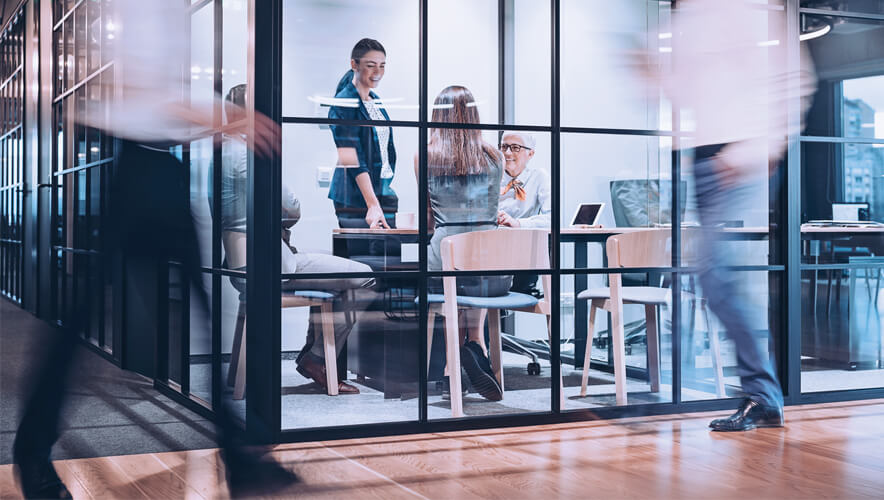Smart Surveillance Contributes to Employee Health and Building Optimization
The beginning of 2020 saw facilities of all sizes adjusting to new health and safety guidelines as the full extent of the impact of COVID-19 pandemic was realized. The Internet of Things (IoT) was a driving force behind smart buildings with its ability to optimize building operations and goals, such as reducing energy consumption and space utilization.
Facility operators are now pivoting to focus on helping to transition employees back to work and reopening their businesses. As such, security professionals are searching for additional ways to leverage existing infrastructure beyond traditional capabilities.
Developments in technology have ushered in a new breed of smart security cameras that analyze data-rich video to trigger appropriate actions through the use of smart apps on the device. By effectively making smart cameras into multipurpose IoT sensors, these devices can be equipped with applications to address COVID-19 related needs and repurposed to improve building optimization and operations after the pandemic.
Occupancy Management
In a commercial building, such as a high-rise office building that thousands of people may enter and exit every day, there are now regulations to enforce social distancing and cap occupancy.
Video-based people counting and crowd management applications are effective tools to manage occupancy and encourage social distancing. These applications can streamline processes and cut costs by eliminating the need for manual tracking of occupants.
When maximum occupancy is reached, proper personnel receive an alert to take action. This process can be fully automated, with screens that function much like a traffic light at building entrances—notifying individuals when they may or may not enter.
During a health crisis, visitor management at large medical institutions is particularly important and offers many opportunities for smart surveillance systems. Visitors, when arriving at hospital, often have difficulty finding their way to their intended room or department. Computer vision solutions are integral, offering the ability to lead a person from the entrance to their destination—without added in-person assistance from staff.
Flexible Technology
New, flexible solutions provide the ability to pivot to other uses to provide long-term benefits. If a zone counter application is used for tracking occupancy limits today, tomorrow the same application can be used to notify facility managers when an individual crosses into an unauthorized zone or accesses the facility after hours.
Further aiding in adherence to health guidelines, object detection applications can serve dual purposes for both the detection of suspicious and unattended objects, as well as ensuring proper facial protection is being used.
Tapping into this new flexibility, managers can source more value from smart cameras throughout their lifecycle and get a higher return on their hardware investment.
Smart video analytics can help manage buildings more efficiently. The key to creating long-term, sustainable infrastructure is to invest in the right technology—one that provides the flexibility to adapt to both evolving health and safety guidelines, and latest advancements in smart buildings.
Fabio Marti is head of marketing for Security & Safety Things.
